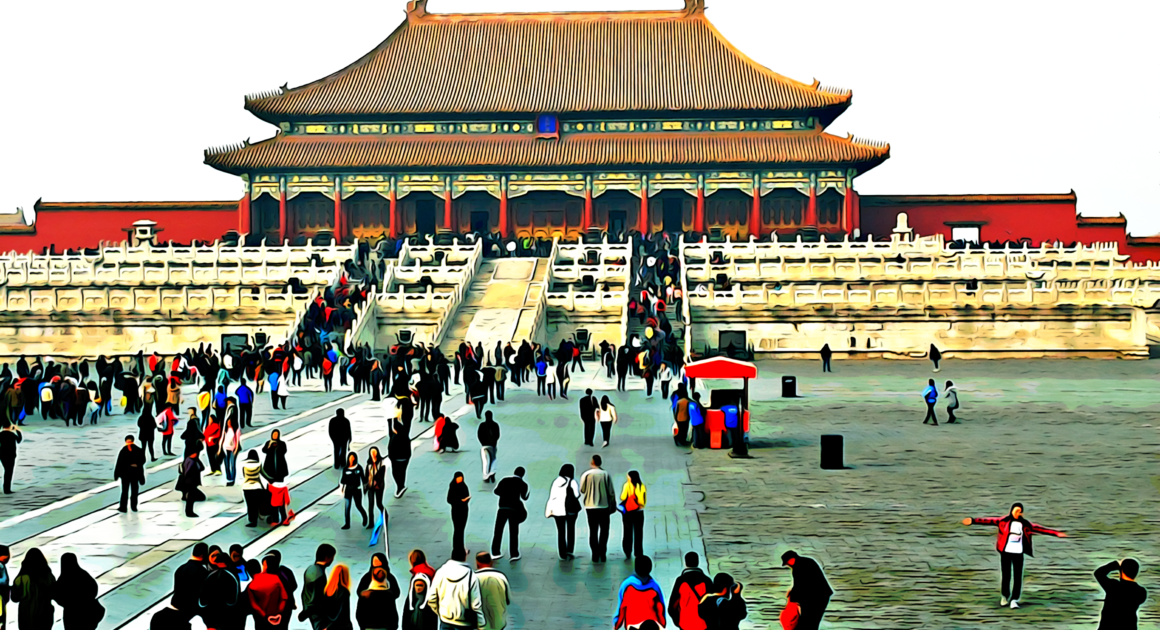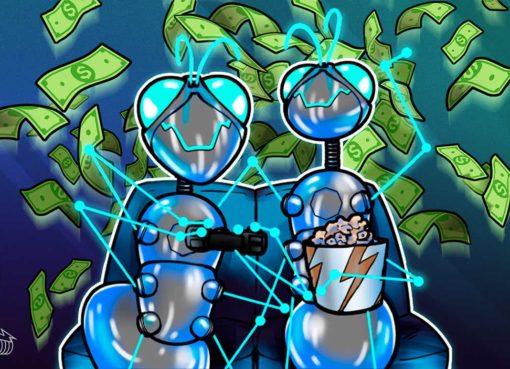For many, 2020 has been one of the most tumultuous years in recent history. Covid-19 swept the world and greatly slowed down, if not stopped, much of ordinary daily life. But for China’s blockchain ambitions, 2020 has been full steam ahead. Even the coronavirus pandemic could not stop China’s determination to push forward with what its leaders have deemed a “core” technology for the nation’s future.
For this year-end review, Forkast.News takes stock of the five biggest developments in blockchain-related technologies in China — the DCEP digital yuan, cryptocurrency mining, government crackdown on crypto exchanges, the new nationwide blockchain service network (BSN), and blockchain technology entering everyday Chinese life — to describe the seismic digital technology shifts underway in the world’s most populous country.
1. China pushes its DCEP digital currency ever closer to launch
The new digital yuan, officially known as DCEP — or “Digital Currency Electronic Payment” — is China’s ambitious project to create the world’s first major central bank-created digital currency (CBDC). Six years in the making already, China’s DCEP is now being tested across the nation by large banks as well as ordinary people alike. The DCEP is a new digital form of the Chinese money supply. Some analysts are expecting China to one day decrease its reliance on the U.S. and have the e-RMB be a viable alternative to the U.S. dollar on the global stage.
Despite the pandemic slowing down much of everyday life around the world, China’s DCEP developments in 2020 have been at rocket speed.
In April, a screenshot for the e-RMB digital wallets from Agricultural Bank of China (ABC), was leaked as pilot tests of the DCEP commenced in four major state-owned commercial banks in Shenzhen, Chengdu, Suzhou and Xiong’an New Area.
In China, where the government and the media often act in concert, news reports on DCEP digital yuan’s developments intensified. China’s Ministry of Commerce laid out detailed plans to expand the digital yuan testing in more regions. China’s central bank, the People’s Bank of China, signed agreements with internet giants, video platforms and e-commerce firms to work with the DCEP.
In October, ordinary Chinese people — or the laobaixing — began trying out the new digital yuan. China’s central bank distributed 10 million e-RMB (about US$1.5 million) in free electronic “red packets” to 50,000 Shenzhen citizens, who could spend the digital currency in thousands of participating restaurants and retail stores. The giveaway served not only as the first large-volume testing for China’s new digital currency but also created a wave of positive publicity for the new digital currency, with nearly 2 million people registering for a chance to win the free money.
After Shenzhen wrapped up its test, Suzhou, located in Eastern China’s Jiangsu Province, is now rolling out a bigger DCEP test with twice as many citizen users, new digital wallet functions and more third-party participants than ever, from December 12 to 27. For the first time, the DCEP citizen-testers will be allowed to spend their digital cash not only in brick-and-mortar stores and restaurants but also at online stores on JD.com.
China’s central bank has kept the DCEP’s official launch date under close wraps. But given the strides made in 2020, it shouldn’t come as anyone’s surprise if China launches the world’s first major and fully formed government-created digital currency in 2021.
2. China puts the squeeze on the cryptocurrency industry
Cryptocurrency trading was a fast-growing industry in China, but it didn’t last long. In 2017 during the ICO craze, China started putting strict regulations on blockchain and effectively outlawed cryptocurrency trading and initial coin offerings. Many crypto exchanges moved their headquarters outside of China but continued doing business out of satellite offices in China — at their peril.
While China officially espouses blockchain technology as a nationwide strategy, its supervision and grip over cryptocurrency companies are tightening.
In October, OKEx — one of the biggest cryptocurrency exchanges in the world, suspended its token withdrawal services for its customers about a month after its founder — Star Xu — was detained by police over an investigation into a merger of his blockchain company, OK Group.
More recently, when China Construction Bank in Malaysia — via Fusang’s digital exchange — was about to issue the first blockchain-based bonds in the world, Beijing stopped the US$3 billion effort in its tracks. China has strict capital controls to prevent an outflow of its currency, the RMB, and Beijing smelled the dangers that a blockchain-based bond could help RMB holders bypass the current restrictions and move their money outside of China
In October, the Chinese government published draft anti-money laundering regulations in the blockchain sector. That same month, China also published the Blockchain Information Service Security Specifications.
The draft AML regulations and the blockchain security specifications signalled China’s renewed efforts to tighten its supervision and rules over blockchain, cryptocurrency and related technology into the future. As China’s regulatory trends are not likely to change anytime soon, it should not come as a surprise if more crypto regulations and crackdowns come the industry’s way in 2021.
3. China’s crypto mining is roiled by setbacks and drama
Aside from Covid-19, China’s crypto mining community faced a lot more hardship 2020.
China is the world’s producer of bitcoin and other cryptocurrency. According to Cambridge University’s bitcoin mining map, China’s miners accounted for 69.3% of the global bitcoin hashrate. The top 5 crypto mining pools are all in China, owned by Chinese residents, including F2Pool, Poolin, Binance Pool, BTC.com and Huobi.pool.
Some Chinese crypto miners got wiped out in the summer of 2020, when the Sichuan Province — one of the most popular places in the world for bitcoin mining because its hydropower means cheap electricity — suffered its worst flooding in 70 years. The catastrophe caused a distinct drop of BTC hashrate in China and affected such crypto mining farms as poolin, f2pool and antpool.
Chinese miners have also encountered at least three waves this year of cryptocurrency-related bank accounts getting frozen by authorities. The latest bank account freezes in November caused such hardship among some Chinese cryptocurrency miners — who couldn’t convert their mined tokens to local currency — that they could not pay their bills for the electricity that fuels their mining.
See related article: Is China trying to put its cryptocurrency industry out of business?
The biggest crypto mining drama of the year featured the co-founders of Bitmain, the world’s largest mining equipment producer.
Wu Jihan and Zhan Ketuan, the two co-founders of Bitmain, had a falling out and have been fighting over the company since 2019. Their battles escalated in 2020 and took on shades of Game of Thrones.
Aside from legal wrangling, Zhan hired a dozen security guards and physically wrested back control of Bitmain’s office in June. In early July, ousted co-founder Zhan established a new online presence for customers to buy Bitmain’s products. In July, Wu pushed back by seizing 10,000 Antminers from a Bitmain-owned crypto mining farm, an act that Zhan alleged was an “illegal transfer of mining machines.”
Bitmain’s civil war continues unabated in courts.
4. Government launches blockchain service network (BSN) for commercial use
BSN, or Blockchain-based Service Network, is a national blockchain platform led by China’s State Information Center and backed by giant state-owned companies like China UnionPay, China Mobile and China Merchants Bank.
Launched for commercial use on April 25, the BSN initiative aims to provide a cheap and efficient way for small and medium-size enterprises to use blockchain technology and build decentralized apps (dApps) in all kinds of application scenarios, not only for China but all around the world.
BSN integrated Chainlink, the blockchain middleware, into its network. BSN also announced in July that six public chains, including Tezos, NEO, Nervos, EOS, IRISnet and Ethereum would be integrated into its network in August to further extend its global reach. At that time, some China watchers wondered whether BSN would be a way to globalize Chinese blockchain tech.
But China quickly ended that speculation by splitting BSN into two entities — BSN International and BSN China. The first would be the global version to bring in outside companies, while the latter was for mainland companies and also a way for China to maintain control over BSN users on the mainland. The public chains would only be in BSN’s international portal, while BSN China — which owns the majority of BSN’s city nodes across the mainland — would be a separate system that cannot access the public and decentralized system.
Once China announced that split, BSN lost its value almost immediately as far as being a bridge with the rest of the world is concerned.
China subsequently launched the BSN Public Permissioned Blockchain, to allow public chain technology that complies with China’s regulatory requirements to also be accessible in BSN China. But it remains unclear how much buy-in it has garnered and how successful it will be in 2021.
In China, blockchain technology used to be viewed as being synonymous with cryptocurrency, especially bitcoin. But in 2020, the Chinese government treated cryptocurrency and blockchain technology very differently, putting a squeeze on the first while favoring the latter through tops-down efforts like BSN.
5. Blockchain technology enters China’s mainstream
After President Xi Jinping publicly praised blockchain in October 2019 and identified the technology as being “core” to national strategy, blockchain in 2020 became more pervasive in corporate strategies as well as the lives of ordinary Chinese.
China’s leading companies in many sectors — including tech, e-commerce, mobile manufacturers and insurance now seem to be in a race to incorporate blockchain technology into their products and business strategies.
Tencent Cloud, the cloud computing arm of tech giant Tencent, launched a blockchain infrastructure engine and a blockchain-based trusted computing platform to “further enrich its blockchain product offerings.”
Alibaba’s Ant Group, which failed to deliver on a massive IPO in Shanghai and Hong Kong, did establish “Trusple”, an amalgamation of the phrase “trust made simple” — a new global trade and finance platform based on blockchain technology.
Blockchain also helped establish one of the world’s first Covid-19 “travel bubbles,” when Macau and mainland China began using a mutual-recognition health code system that now allows two-way travel, without quarantine, between the mainland and the semi-autonomous territory. The gambling mecca is now able to welcome back mainland tourists as a result.
Another indicator of just how much blockchain is penetrating the national consciousness may be China’s Gaokao, also known as China’s National College Entrance Examination.
Every year, nearly 10 million high school students take this grueling exam in hopes that a good score would be a ticket into China’s elite universities. The kind of questions asked on this exam not only reflect the cultural zeitgeist but also signal to China’s young people what is important to know. In 2020, for the first time, questions on cryptocurrency and the economic geography of bitcoin mining showed up on a mock exam for the Gaokao.
Anticipating a surge in China’s labor demand for graduates specializing in blockchain, blockchain education programs have also been popping up on the mainland. This year, the Chengdu University of Information Technology became the first university in China to offer a four-year degree program in blockchain.




